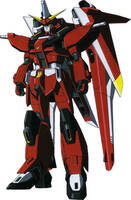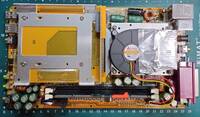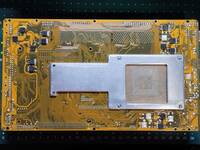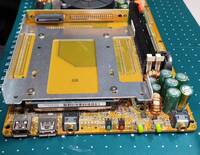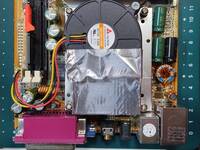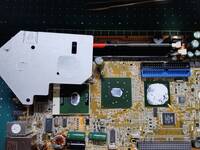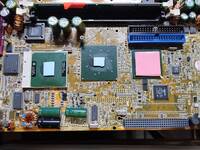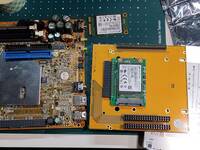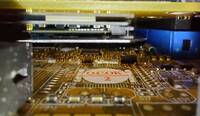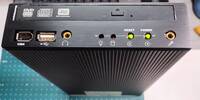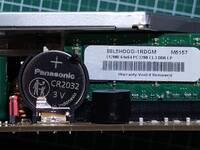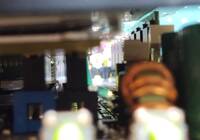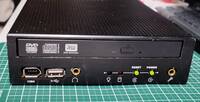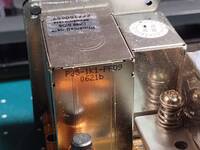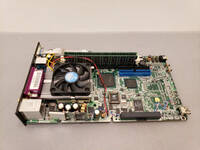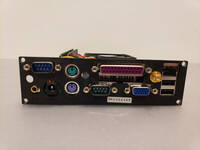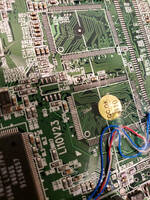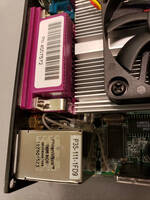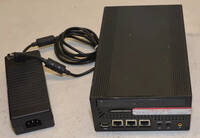saviour (ArchRock Gateway Server RSS-2000)
Summary
TODO
Notes
- uses low profile DDR, but can fit normal height if no optical drive is installed
Hardware
| Make | ArchRock |
| Year | 2007 |
| Model | RSS-2000 |
| Chassis | ArchRock Gateway Server |
| Power Supply | 12V |
| Processor | 1.6 GHz Intel Celeron M 380 |
| Memory | 512MB DDR-400 |
| Ports | DB-9 Serial |
| DB-25 Parallel | |
| VGA | |
| 3.5mm Audio | |
| PS/2 Keyboard | |
| PS/2 Mouse | |
| 2x USB A 2.0 | |
| RJ-45 LAN | |
| Firewire 400 | |
| 3.5mm Headphone | |
| 3.5mm Microphone | |
| Graphics | Intel Extreme Graphics 855 GM |
| Storage | 128GB Micro M550 mSATA SSD |
| Toshiba UJ-850 DVD drive | |
| Display | - |
| Int. Peripherals | |
| Ext. Peripherals | |
| Dimensions | |
| Length/Depth | |
| Width | |
| Height/Thickness | |
| Weight | kg (lbs oz) |
Software
| Operating System | |
| Unique applications |
Log
Ebay Celeron M mini server
I had my eye on this little server for a while. It was interesting because of the size, vintage, and having firewire.
Internally it has an unknown motherboard, about 14x25cm. There are standard 40-pin PATA headers, and standard DDR DIMM slots. I think there is a PC/104 style PCI slot, but it is currently just used to support the drive PCB, and provide drive power.
The drive PCB adapts the full size headers to 44-pin 2.5" drive, and laptop slimline PATA drive.
It came with a single 512MB DDR-400 DIMM. While the case will accommodate full height DIMMs, installing an optical drive wouldn't be possible. I'm finding it pretty challenging to get more memory for this. The closest I found was DDR-266 1GB sticks at $60 each.
The original purpose of this device seems to be some kind of Gateway appliance for a bunch of wireless sensors. There's more info about it in the Arch Rock Primer Pack Datasheet (wayback machine). This gateway doesn't have any specialized hardware for wireless. It was running some variety of CentOS, but I just pulled the drive for now so I can explore it later.
I swapped the spinning disk for a couple 64GB compact flash cards on a 2.5" carrier. I installed Windows 2000 Pro to have something to play around with for now. The compact flash drives seem to be causing long waits so I need to switch to something else.
Drive non-upgrade
I got some 64GB M.2 SATA SSDs. I went to install them using a PATA to mSATA module, with a MSATA to M.2 module. The stack ended up being too thick so the drive carrier couldn't fully seat.
I also got a Toshiba UJ-850 slim DVD±RW drive. It is just a regular tray style (slot would've been cool), but it appears near new.
In the mean time I ordered a mSATA SSD, and managed to find a 512MB somewhat low-profile DDR-400 stick for a good price.
Once I get those in I'll verify the slimline DVD drive position, and cut the front panel to fit.
New drive and drivers
I put the new SSD (128GB Micron M550 mSATA) in, and secured the optical drive to the mounting bracket. Still waiting on a RAM stick to seal it up.
I put a Windows 2000 install on the new drive, and installed SP4. Haven't chased down all the drivers yet, but here's a few:
IDE, Chipset, USB - https://theretroweb.com/chips/2791#driver(see below for correct source)- Graphics - https://theretroweb.com/drivers/63
- Maybe some other onboard devices - https://theretroweb.com/chips/2814#driver
- LAN (EP92562ET, Pro/100 VE) - https://theretroweb.com/chips/4811#driver
It looks like I'm still missing the SMBUS (8086:24c5), Audio (8086:24c3) devices. I see those device ids mentioned in ich4usb, and ich4core INF files.
I made the wrong choice for chipset drivers. I should have just grabbed the latest from https://www.philscomputerlab.com/intel-chipset-drivers.html. (6.3.0.1007).
Unfortunately this still doesn't cover the sound driver. One of the inf files mentions the 24c3 device, but marks it as NO_DRV. The sound device is covered by Realtek's AC'97 Audio Codecs installer.
Cutting the front panel
I cut out the hole for the optical drive. I started with a step drill. Then I did a little work with my sheet metal nibbler.
The front panel is quite thick, maybe 1.5mm. It was a bit much to take full bites with the nibbler so I cut out the center with a dremel. Some had to be cut from the wrong side due to the mounting piece on the back.
It took some filing to clean it up, and put bevels on the edges. I didn't have any black paint to cover the exposed aluminum at the moment. I'll retape it to try and keep it clean looking when I do that.
New RAM doesn't work or fit
I got a stick of GB Micro 512MB PC3200 DDR (88L5HDGG-1RDGM). It is about 25mm tall; low-profile, but not as short as the stock stick's 19mm. This ends up taller than the DRAM latches, and it prevents the drive board from seating. The tallest stick that could be accomodated is about 21mm.
The RAM was also bad or incompatible. I tried it with my original stick, alone, either slot, and after a BIOS reset. Nothing would post, just a long beep.
Not sure what would make it incompatible. It does have newer BGA chips.
I'm considering making my own DIMM. I can get full height DIMMs with the same Elpida chips as on my low profile stick. Not sure if I'm capable of duplicating it without pulling off the chips, but it might be feasible.
Assembled
I put a little bit of paint on the drive cut-out, and assembled it. The DVD drive is noisy but it works.
I found similar mainboards, and the model number
I was thinking about those nice colorful PCB graphics cards from the past (like GeForce 4 Ti series). So I was searching up a few on ebay and came across some Soltek ones. So I started searching Soltek, and looking at pretty purple motherboards. Then I came upon it.
The Soltek P35 series. This is the form factor I have, and there seems to be quite a few like it. My favorite part is they all jammed a firewire chipset onto this small form factor, even the one with 3 NICs.
So the question remains. Which is the model of my mainboard? The other have a model sticker on top of the ethernet header, but mine does not. Then I found it. On the back of the ethernet header is printed "P25-1K1-PFD9" and "0621b". I did some more inspection, and found "LI17V23B" silk screened near the firewire chip.

